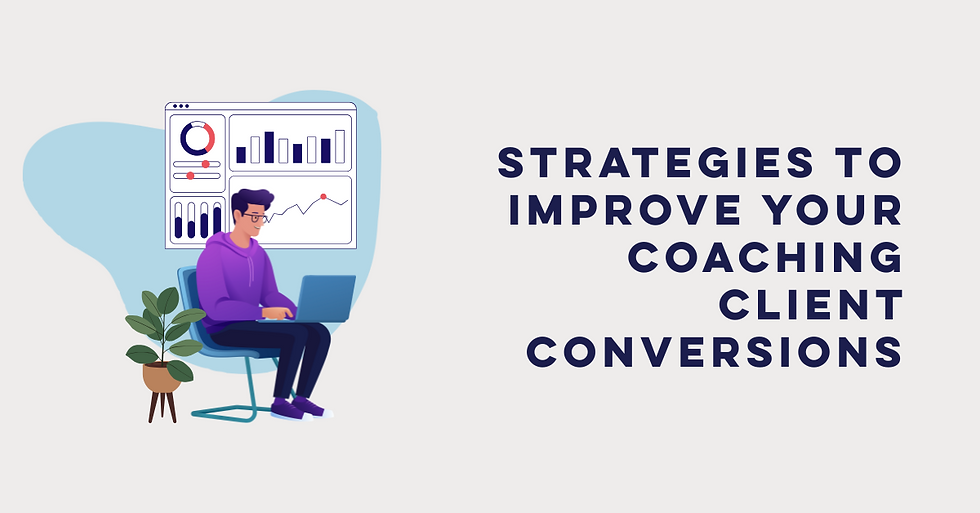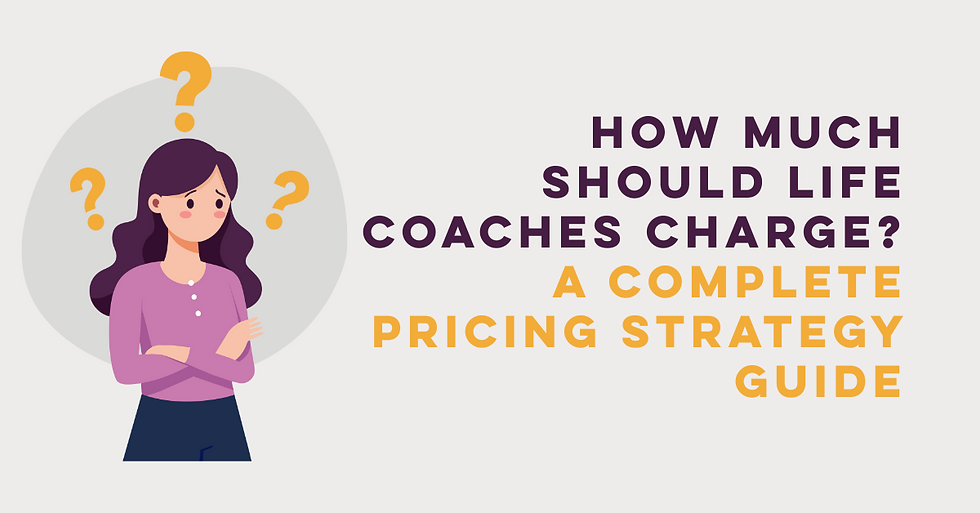Not Every Client is Compatible with Every Coach: 7 Ways to Attract Your Ideal Coaching Client
- Andras Bodnar

- Jul 21
- 5 min read
Updated: Jul 22
TL;DR
Not every client is a good fit for every coach, and that’s okay. This article explores why coach-client compatibility is essential for success and provides 7 actionable strategies to attract your ideal coaching clients. From defining your client avatar to leveraging social proof and hosting free workshops, you’ll learn how to connect with the right people, build trust, and grow your coaching business.

As a life coach, you’ve likely experienced the frustration of working with clients who just didn’t feel like the right fit. Maybe their goals didn’t align with your expertise, or perhaps your coaching styles clashed. You’re not alone. Studies show that mismatched expectations between coaches and clients can lead to lower satisfaction and reduced success rates in coaching relationships.
The truth is, not every client is compatible with every coach, and that’s okay. In fact, trying to work with everyone can dilute your impact, drain your energy, and even hurt your reputation. The key to building a thriving coaching business isn’t about casting a wide net; it’s about attracting your ideal coaching clients - the ones who align with your values, expertise, and approach.
In this article, we’ll look at why coach-client compatibility is essential and share seven actionable ways to attract your ideal coaching clients. Whether you’re looking to grow your coaching business or refine your marketing strategy, these tips will help you connect with the right people and create a practice that feels aligned and fulfilling.
Why Coach-Client Compatibility Matters
Imagine working with a client who expects quick fixes when your approach is rooted in deep, transformational work. Or coaching someone who needs career advice when your expertise lies in personal growth. These mismatches can lead to:
Frustration: Both you and the client may feel dissatisfied with the process.
Unmet expectations: Clients may not achieve the results they’re looking for, leading to negative reviews or poor word of mouth.
Burnout: Working with incompatible clients can drain your energy and passion for coaching.
When you focus on attracting clients who are truly compatible with your coaching style, you’ll:
Build stronger, more trusting relationships.
Deliver better results and create meaningful transformations.
Enhance your reputation with glowing testimonials and referrals.
7 Ways to Attract Your Ideal Coaching Client
Here’s how to ensure you’re connecting with the right people and building a practice that feels aligned and impactful:
1. Define Your Ideal Coaching Client
Before you can attract your ideal clients, you need to know who they are. Start by creating a detailed profile, often referred to as a client avatar. This should include:
Demographics: Age, profession, location, etc.
Psychographics: Values, goals, challenges, and motivations.
Pain points: What problems are they trying to solve?
Desired outcomes: What transformation are they seeking?
For example: “My ideal client is a 30-45-year-old professional who feels stuck in their career. They’re ambitious but struggle with self-doubt and work-life balance. They value personal growth and are ready to invest in themselves, but need guidance to take the first step.”
This clarity will enable you to tailor your messaging and services to resonate with the right audience effectively.
Need help creating your client avatar? Download our free Ideal Client Avatar Worksheet here to get started:
2. Narrow Your Niche
Specializing in a specific niche doesn’t limit you; it amplifies your impact. When you focus on a particular audience or problem, you position yourself as an expert, making it easier for your ideal clients to find and trust you.
Use the “Target + Problem + Outcome” formula to define your niche:
Target: Who do you help?
Problem: What challenge are they facing?
Outcome: What transformation do you help them achieve?
For example: “I help mid-career professionals overcome burnout and create a sustainable work-life balance.”
This clarity not only attracts the right clients but also sets clear expectations for your coaching relationship.
3. Speak Their Language
Your ideal clients need to feel like you get them. Use their words to describe their challenges, goals, and aspirations.
Examples of client-focused messaging:
Instead of: “I help people achieve work-life balance,” try: “I help busy professionals stop feeling overwhelmed and finally enjoy their evenings without guilt.”
Instead of: “I help people set goals,” try: “I help ambitious women turn their big dreams into actionable plans without burning out.”
When your messaging reflects their inner thoughts and struggles, they’ll feel seen and understood andd more likely to reach out.
4. Ask the Right Questions
Coach-client compatibility starts with understanding whether you’re the right fit for each other.
During discovery calls or consultations, ask questions like:
What challenges are you currently facing?
What goals do you want to achieve through coaching?
Have you worked with a coach before? If so, what worked and what didn’t?
What are your expectations for the coaching process?
These questions not only help you assess compatibility but also show potential clients that you’re invested in their success.
5. Create Content That Resonates
Your content is often the first impression potential clients have of you. Use blogs, videos, and social media posts to address their pain points and offer solutions.
Examples of content ideas:
Blog post: “5 Signs You’re Burned Out (And How Coaching Can Help)”
Video: “How to Overcome Self-Doubt and Take Action on Your Goals”
Social media post: “Feeling stuck in your career? Here’s how to regain clarity and confidence.”
When your content feels relevant and helpful, your audience will see you as a trusted guide.
6. Leverage Social Proof
Testimonials and success stories are powerful tools for building trust. Highlight real-world results your clients have achieved, and let their words speak to your expertise.
How to showcase social proof effectively:
Share detailed testimonials that include specific results (e.g., “I landed my dream job within three months of working with [Coach’s Name]”).
Use video testimonials to add authenticity and relatability.
Create case studies that outline a client’s journey from challenge to transformation.
7. Host Free Workshops or Webinars
Offering free events is a great way to connect with potential clients and showcase your expertise. Choose topics that address your ideal client’s biggest challenges, such as:
“How to Set Boundaries and Reclaim Your Time”
“3 Steps to Build Confidence in Your Career”
Pro Tip: Follow up with attendees by offering a free discovery call or a downloadable resource. This keeps the conversation going and helps you filter leads who are a good fit for your coaching style.
How to Gracefully Decline Clients Who Aren’t a Good Fit
Sometimes, you’ll encounter clients who aren’t compatible with your coaching style. It’s important to handle these situations with professionalism and empathy.
How to decline gracefully:
Be honest but kind: “I don’t think I’m the best coach to help you with this specific challenge, but I’d be happy to recommend someone who might be a better fit.”
Offer alternatives: Suggest other coaches, resources, or programs that align with their needs.
Keep the door open: “If your goals shift in the future, I’d love to revisit working together.”
This approach protects your reputation while ensuring the client feels respected and supported.
Final Thoughts
Not every client is compatible with every coach, and that’s a good thing. By focusing on attracting your ideal coaching clients, you’ll create deeper connections, deliver better results, and build a business that feels aligned with your values and expertise.
Your ideal clients are out there, waiting for the transformation only you can provide. Let them find you.
If you found this article helpful, why not share it? Help us connect more coaches with their ideal clients by sharing this post on Facebook, X, or LinkedIn using the links below. Or, copy the URL and send it to a fellow coach who might need a confidence boost.



